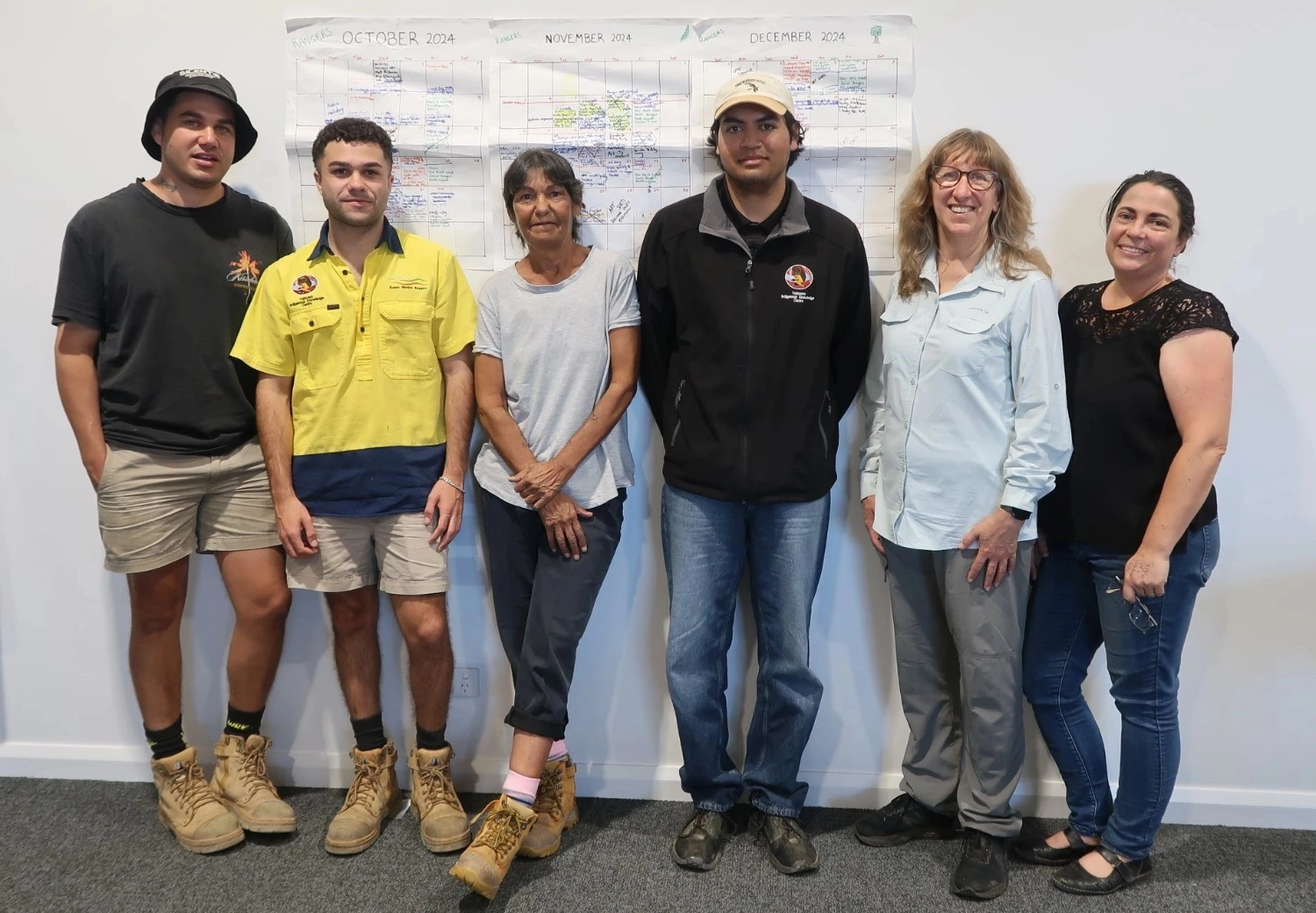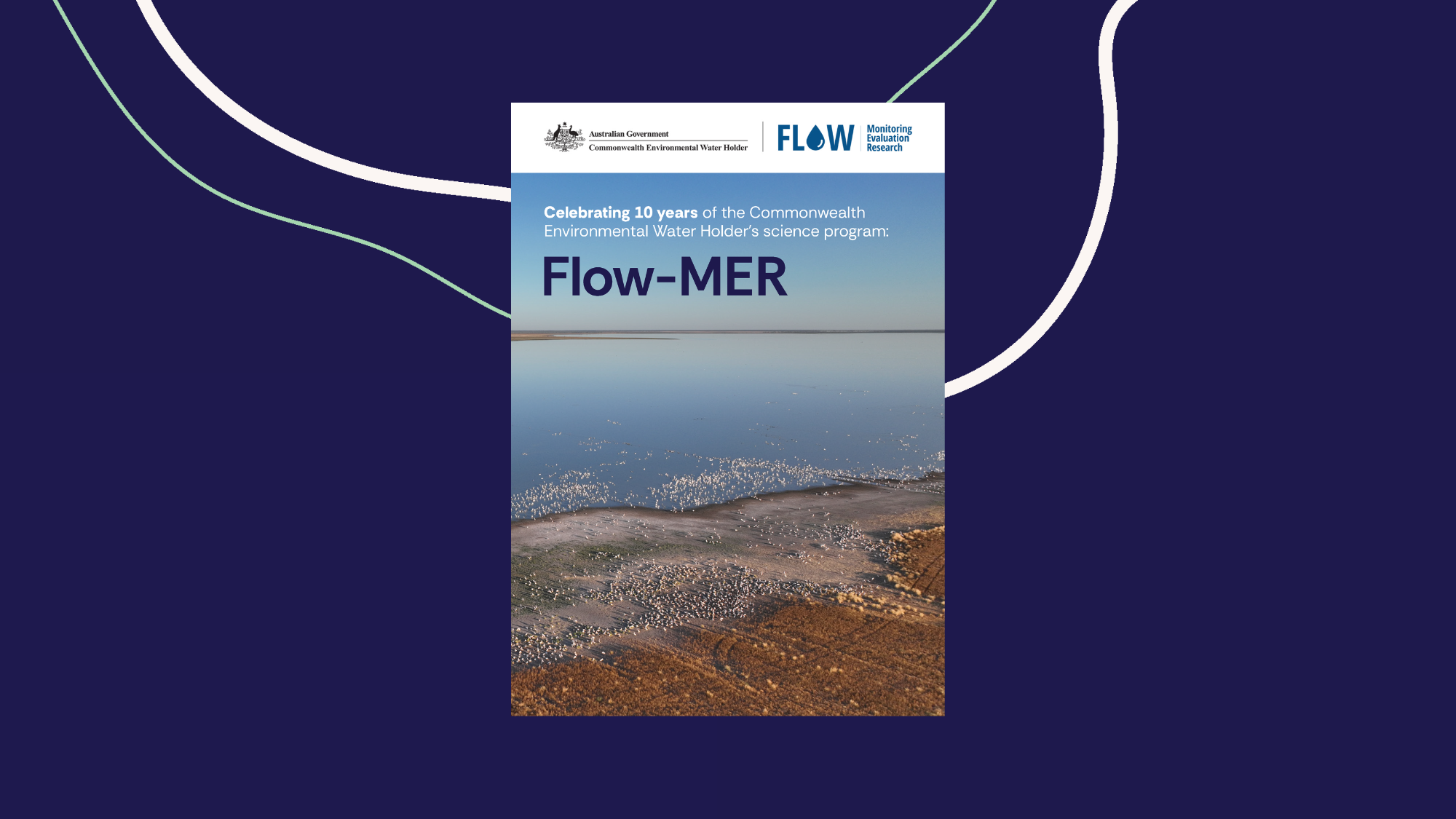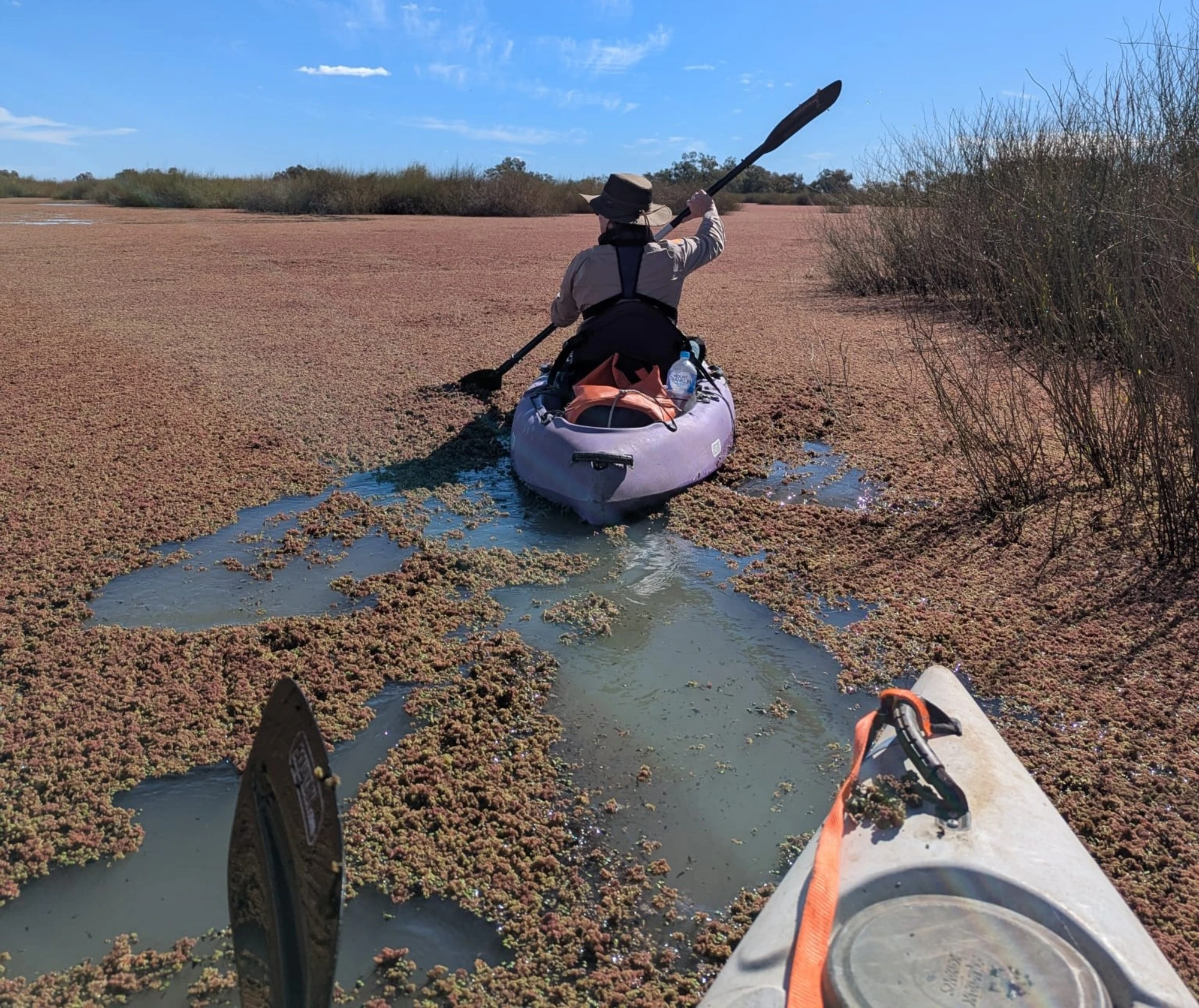The Mid-Murray River System Area-scale Project involves monitoring, evaluation, research, communication, and engagement activities. The project is funded by the Commonwealth Environmental Water Holder (CEWH) and is undertaken through a collaboration of scientists, managers, First Nations peoples, and other community organisations.
As part of that collaboration, the Kolety Werkul River Rangers team from Yarkuwa Indigenous Knowledge Centre at Deniliquin took part in monitoring of an environmental watering trial in Werai Forest, west of Deniliquin, NSW, in 2024
Werai Forest wetland is internationally significant, being part of the NSW Central Murray State Forest Ramsar site. The forest is culturally significant to First Nations peoples and ecologically important, providing refuge for plants and animals, and is a breeding ground, nursery and migration path for both fish and birds. Werai Forest is owned and managed by the Werai Land and Water Aboriginal Corporation, who aim to bring the forest back to a state of natural abundance.
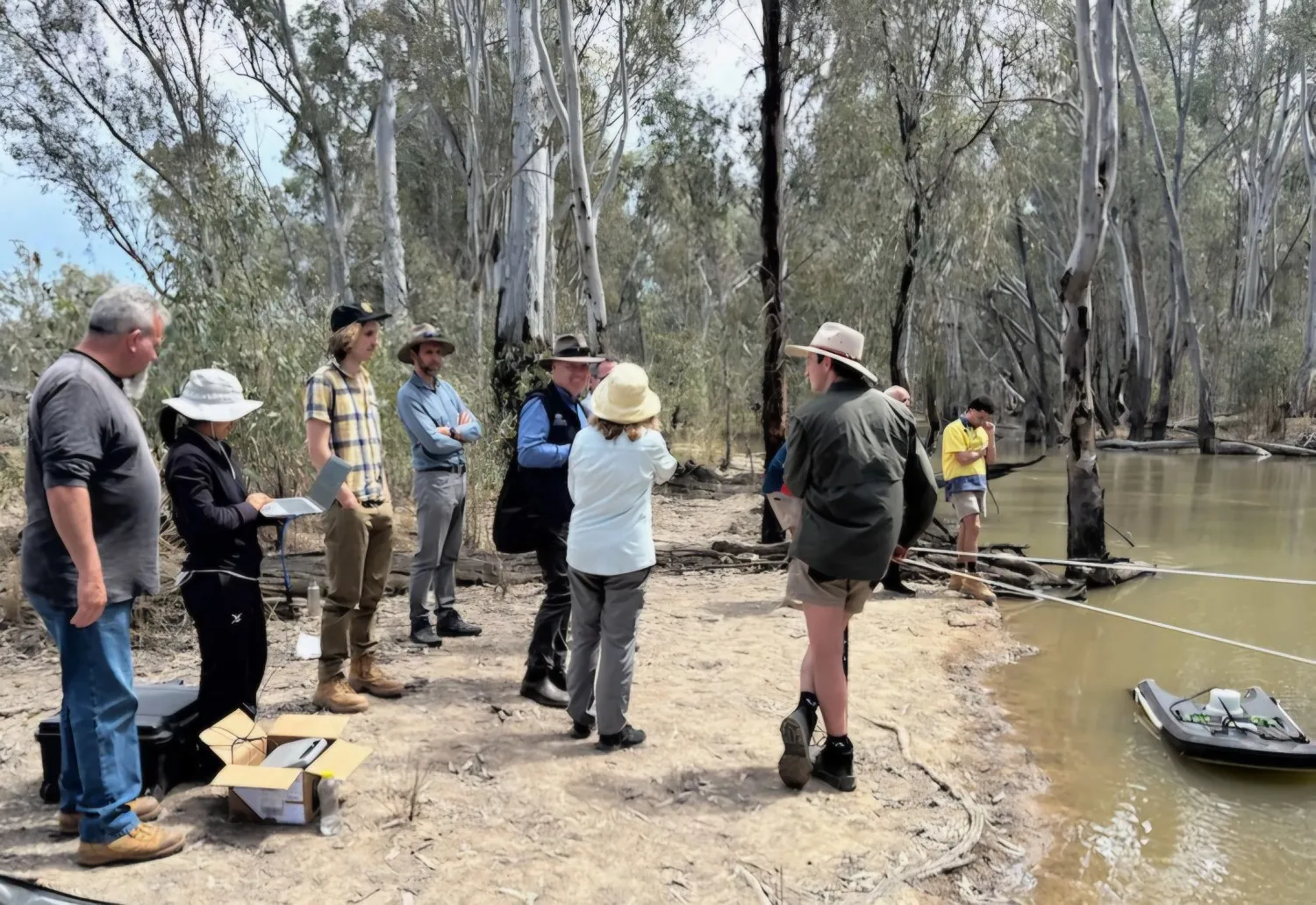
The Edward/Kolety River flow trial undertaken in October 2024 was the first time that environmental water had been delivered to Werai Forest since 2009. Analysis of satellite imagery showed that part of the forest, including many flood runners, was inundated during the trial.
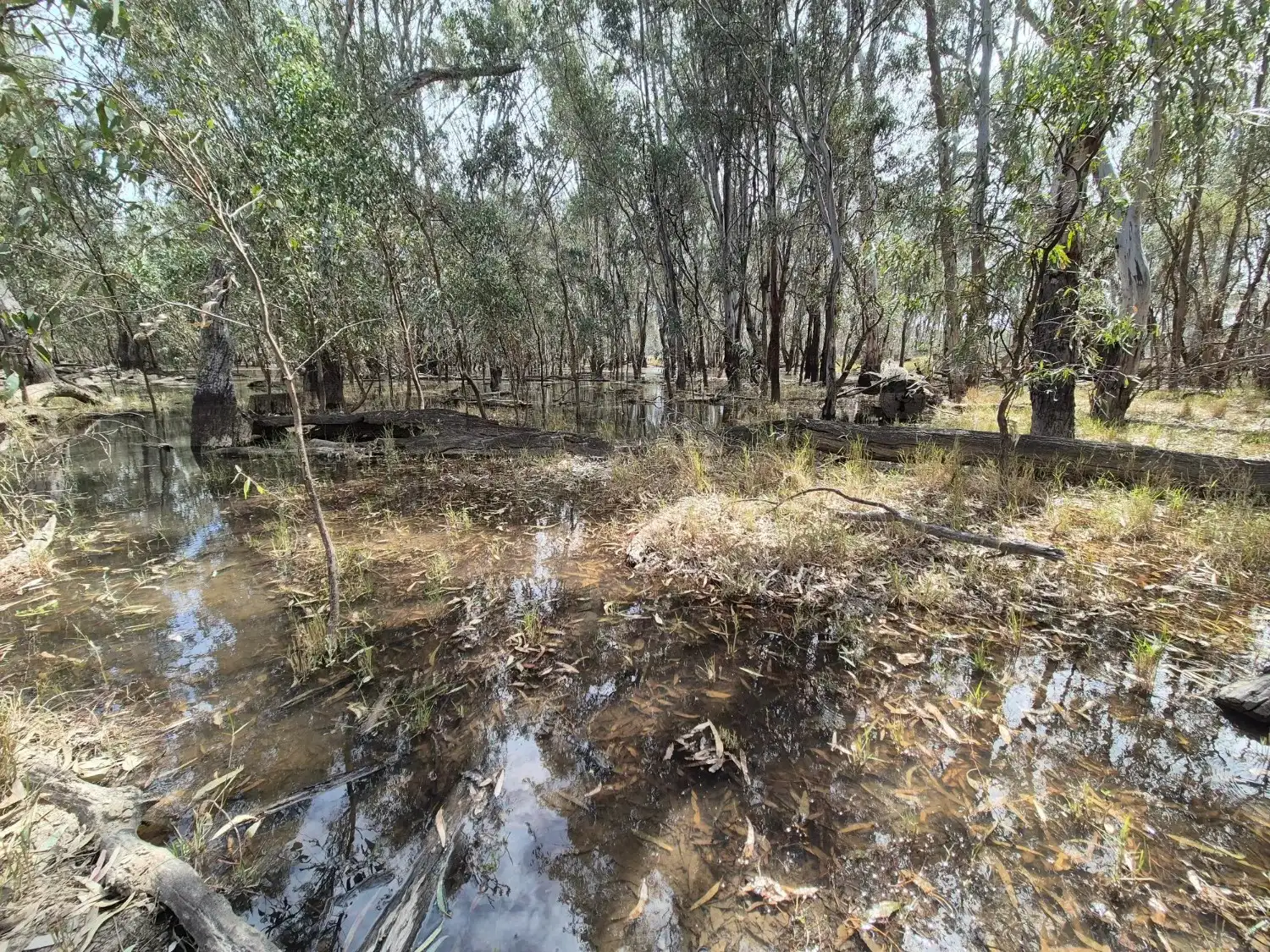
From September (before the flow trial) to December 2024 (after the flow trial) the Kolety Werkul River Rangers were involved in a wide range of activities, with monitoring undertaken almost every week over that period.
After a training session with Dr Sam Davidson from Streamology, the rangers worked with CSU’s Mid-Murray Flow-MER Team to measure the amount of water going into and out of the forest using an acoustic doppler current profiler (ADCP).

The rangers worked with CSU’s Dr Shasha Liu, John Trethewie and Chris Sundblom to collect water samples for environmental DNA (eDNA) analysis – a process that provides information on animals, fish and crustaceans that use the waterways in the forest. Together, they collect water samples to compare the difference in the quality of water going into the forest with the water exiting the forest into Colligen Creek. They also conduct vegetation surveys with Sascha Healy (Murray-Darling Wetlands Working Group) and Flow-MER Mid-Murray River System Area-scale Project Leader Professor Robyn Watts (Charles Sturt University).
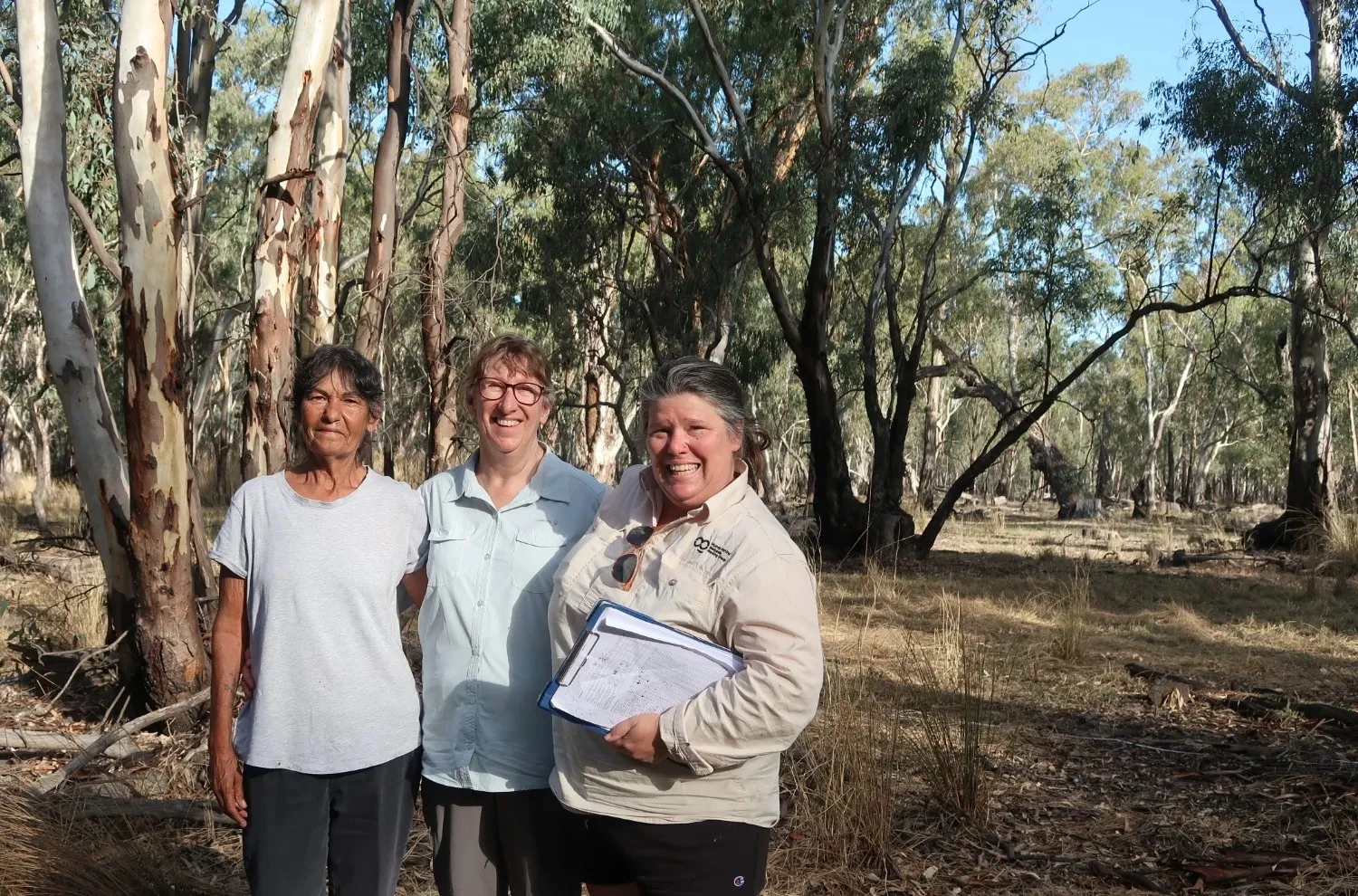
The collaboration between Flow-MER scientists and River Rangers is an excellent opportunity for all to share traditional, cultural and scientific knowledge while working on Country. These partnerships foster a holistic approach to environmental water management in Flow–MER while enriching monitoring projects and outcomes.
While each of the rangers had their favourite activity, all agreed the kayaking used during the flow gauging, was a lot of fun.
“Especially when Ty [River Ranger Tyron Ross] tipped up the kayak and went for a swim,” laughed senior ranger Brandon Cooper, a ranger for three years. “It was interesting to see the water come and go…and how the forest and the vegetation is always changing. I like seeing all the different animals, the snakes and especially the eagles. We pull up and watch them fly around, that’s always good.”
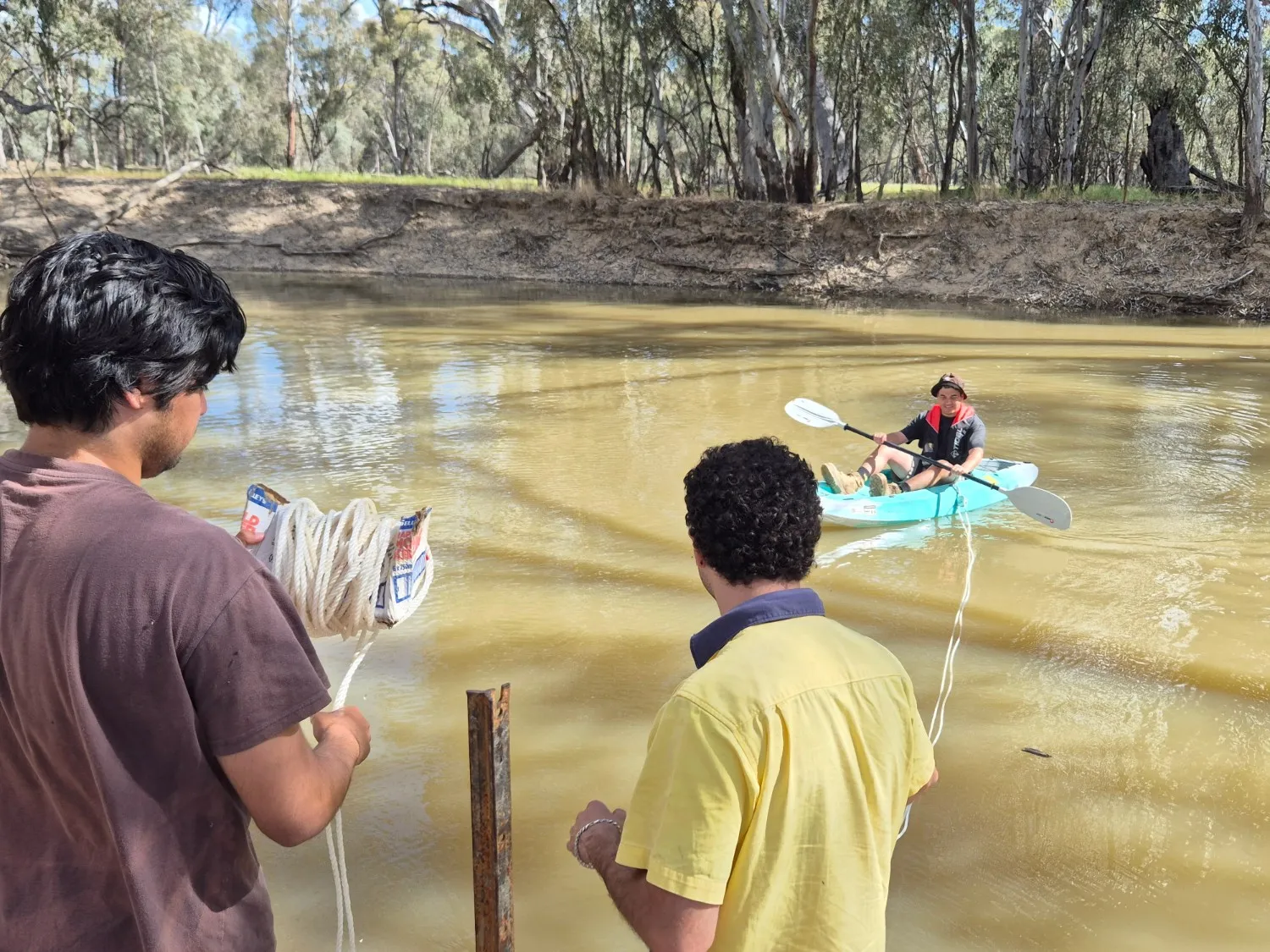
A highlight for the rangers was the cultural sites they come across while out in the forest.
“You might be driving around and go for a little wander and then you’d stumble upon a midden or a scar tree,” said Brandon. “When we were setting up for the flow gauging there was a scar tree on the opposite side of the bank. And you think, wow, there were people here for such a long time. You feel that connection to the past.”
The rangers agreed that their work has increased both their technical skills as well as their traditional and cultural knowledge.
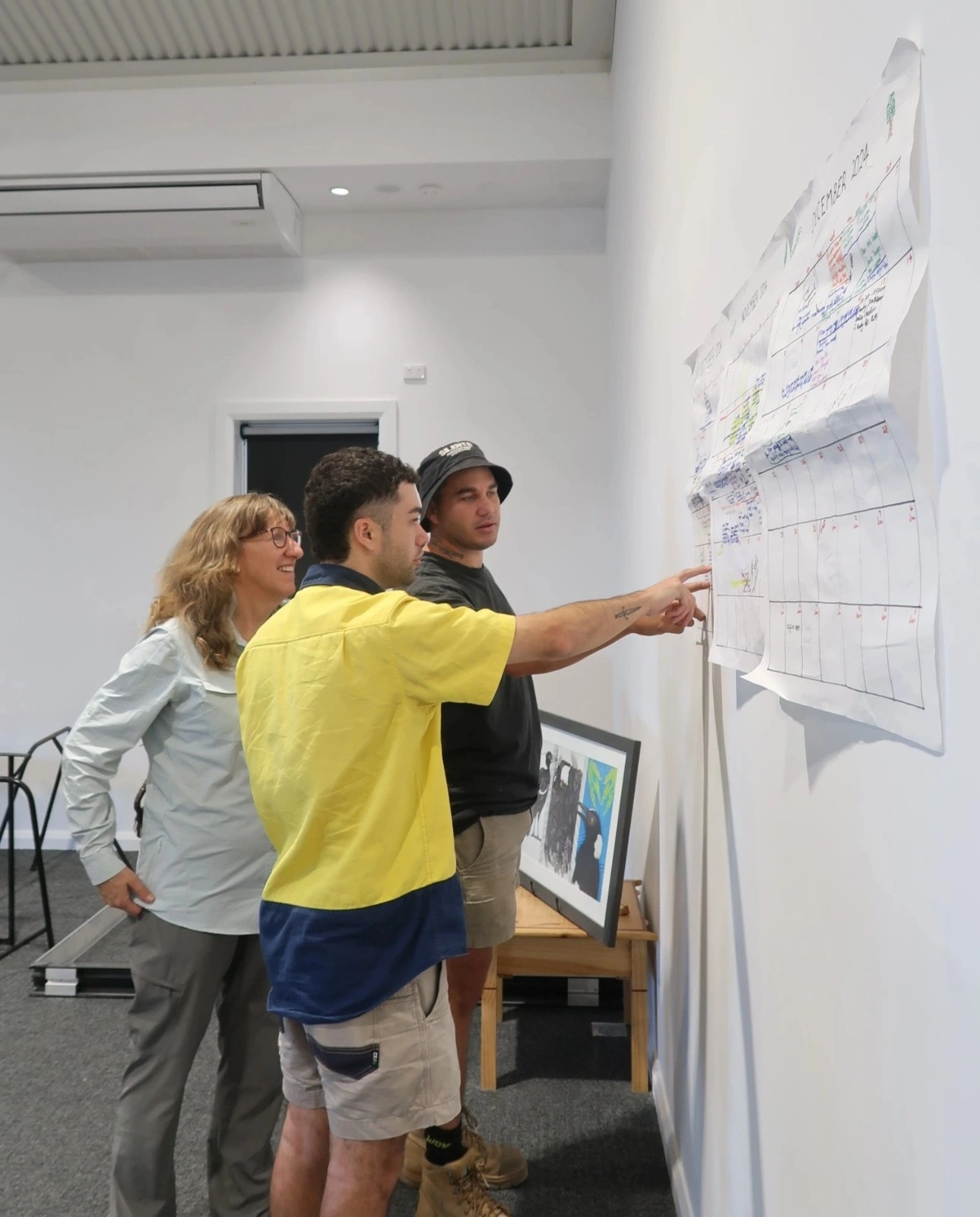
“It was really good to learn new skills and to be out there, on Country, with your family and cousins and learn together,” said Riley Parsons-Cooper, also a River Ranger for three years. Before becoming a ranger, Cooper said he only went to the forest when he was camping at the former Moonahcullah Aboriginal Mission on the banks of the Edward/Kolety River. He said his work as a River Ranger, undertaking activities such as pest management, weed control, and more recently scientific monitoring, had given him a much closer connection to Country.
River Ranger Shemar Day said being involved in the River Ranger program had provided further opportunities to learn from Elders and pass that knowledge on to the younger members of the community. “Sometimes we get one of our Elders from the community coming out and doing cultural heritage surveys which is good, and we do learn,” he said. “They know so much.”
Shemar has helped coordinate camps in Werai Forest for the Yarkuwa Junior Rangers’ program with students from the Deniliquin High School. The rangers pass on cultural and traditional knowledge as well as what they have learnt from being involved in the scientific monitoring. “Most of the Junior Rangers like the camps and going out to the forest more often,” said Shemar. “We’ve had some of them come and do work experience with us.”
The rangers are looking forward to hearing about the findings from all the data that they helped collect and being involved in the reporting of the findings so as to share both western and Indigenous perspectives on the results.
“That’s the biggest thing, we want to know what the data we collected means, especially the results of the eDNA sampling,” said Brandon. “It will be really interesting to find out what fish and other creatures are in the water, the things you can’t see.”
The reporting of the monitoring results and outcomes of the environmental watering trial in Werai Forest will be undertaken through collaboration of Western scientists and Traditional Owners. “People involved in the project may have different interpretations of what the data shows,” said Robyn. “A hydrologist may see something different in the findings to an ecologist or a Traditional Owner. The aim is to write a report that is interdisciplinary and brings together different perspectives, so we will end up with a much richer understanding of the findings. It’s shared data, it’s everyone’s data.”
Robyn said “the River Rangers make a fantastic contribution to the Flow-MER Program’s Mid-Murray River System Area-scale Project. Our team is looking forward to continuing to work with them,” she said. “We've had discussions with the rangers and the project's Cultural Advisor, Jeanette Crew from the Yarkuwa Indigenous Knowledge Centre, to look at what they would like to include in their workplan for the next water year."
Flow-MER’s Mid-Murray River System Area-scale Project is a 5-year program (2024-2029) funded by the CEWH, from the Mid-Murray River System from Hume Dam to Mildura, including the Edward/Kolety-Wakool system. The Kolety Werkul River Rangers will continue to collaborate with the Mid-Murray River Systesm Area-scale Project team to monitor environmental watering actions and research in the Edward/Kolety-Wakool system.
Passing on Cultural Knowledge
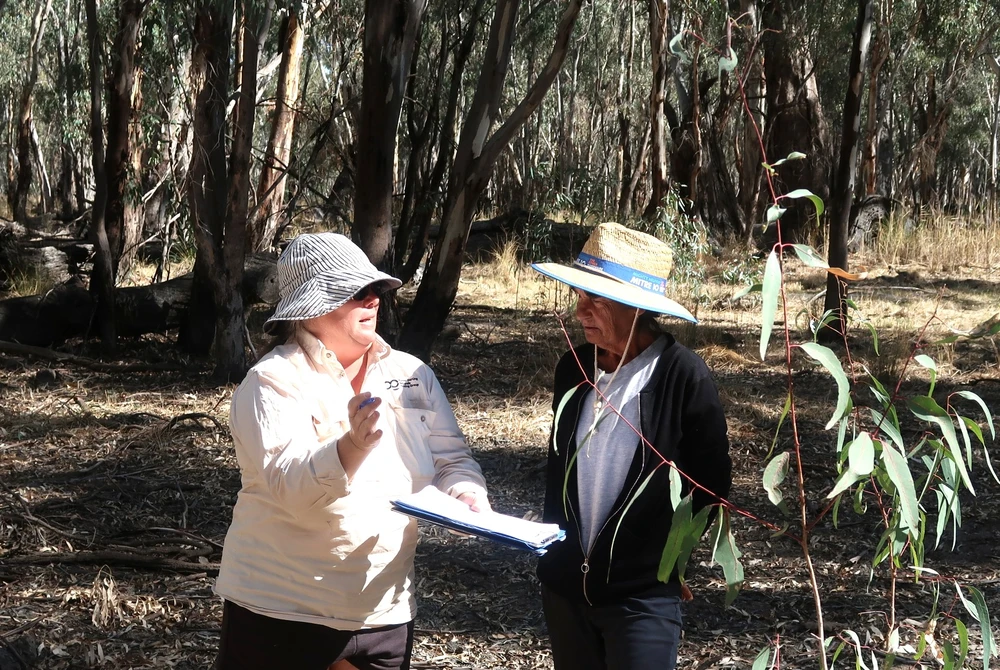
Wamba Wamba Perrepa Perrepa woman Tracy Hamilton is a Senior Ranger with the Kolety Werkul River Rangers program and has been a ‘guiding light’ in the program’s development and evolution.
As well as sharing her local Indigenous cultural and traditional knowledge as part of the program, Tracy has taken part in various monitoring activities for the current Mid-Murray River System Area-scale Project, as well as previous environmental water monitoring projects in the Edward/Kolety-Wakool river system. Over the past 5 years, she has collaborated with Flow-MER scientists on vegetation surveys, turtle monitoring, eDNA surveys, flow gauging, and water quality monitoring.
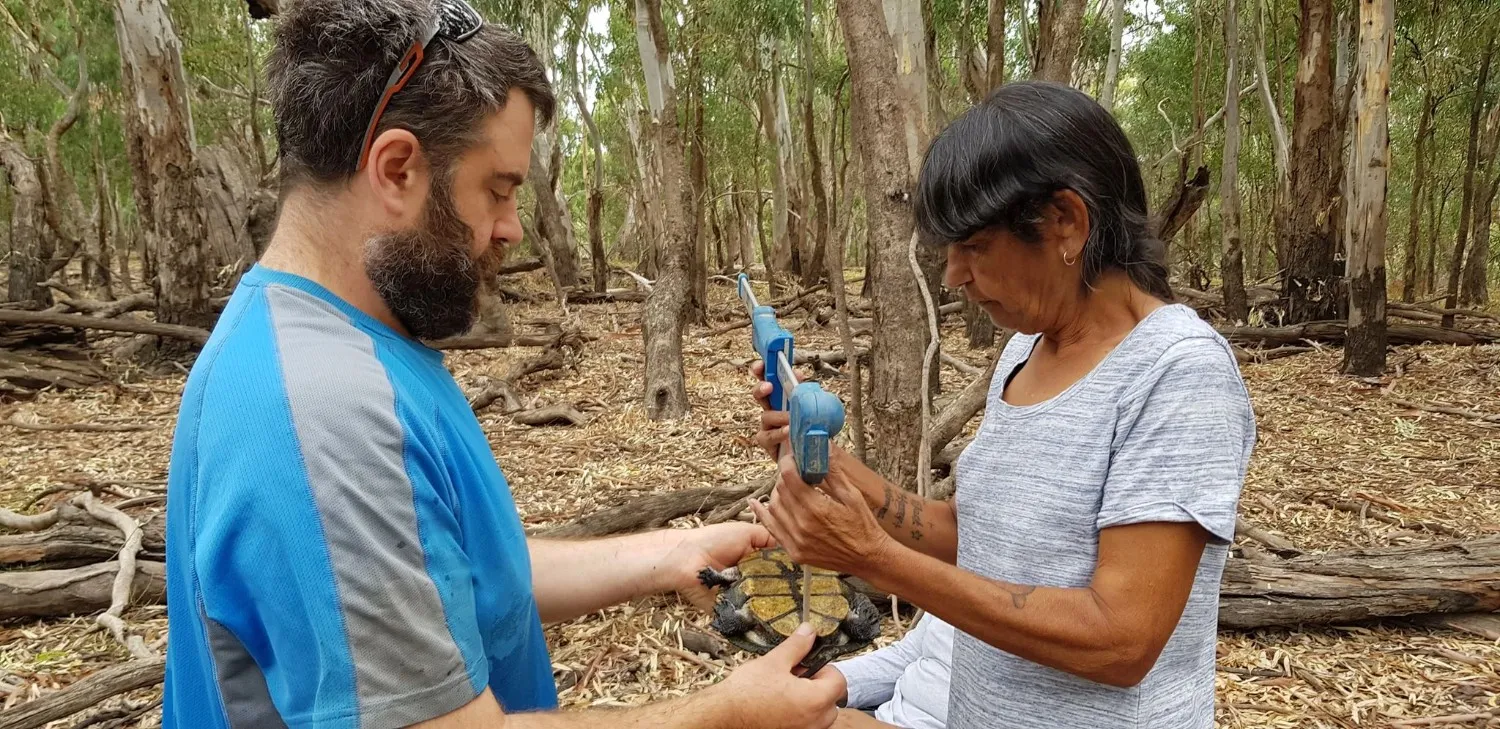
Tracy is recognised for her knowledge of Indigenous plants and how they were/are used by First Nations. She runs Cultural Knowledge tours for the Yarkuwa Indigenous Knowledge Centre of which she is a founding member (the Centre was established in 2003). She has also long been involved in the assessment of cultural sites in the local area.
“It’s been great to see the bush recover as a result of the environmental watering,” said Tracy who helped to identify the plants in the project’s vegetation surveys and explain their traditional use. The watering, together with the natural flood in 2022, has also helped to control the Paterson’s curse which was rife in the forest. “It used to be just a sea of purple,.
Scientific monitoring in collaboration with the Mid-Murray Rivery System Area-scale Project team is included in the rangers’ yearly work plan. “Which is all good,” said Tracy. “It [the workplan] now includes stuff we didn’t do in the early years when I started out.”
She said back then the rangers’ work was more focused on cultural assessments (i.e. mapping and marking cultural sites such as burial sites and scar trees), fox control and weed control. While this work continues, Tracy said the additional scientific monitoring work helps keep the rangers busy. “It’s really good to see the boys get out of the office and get involved in new things”.
Over the years, Tracy has seen several younger members of her community take part in the River Ranger program and then go on to take on other roles in the community. “I like seeing how they evolve and grow,” she said. She’s also pleased to see how the rangers (who are in their 20s and 30s) have begun passing on the knowledge that they’ve learned.
“The boys, they’re coming along, they’re pretty good, and even the young ones are starting to pass on stuff to the next generation which is really good,” said Tracy. “I’ve passed it on to this generation now and they’re passing it on to the next one.”

